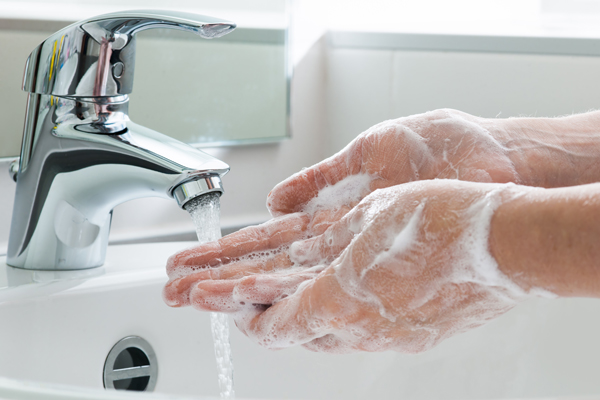
Also referred to as ‘the super bug,’ MRSA stands for methicillin-resistant Staphylococcus aureus. It is a type of bacteria that is more difficult to treat than other bacterial infections because of its resistance to many typically used antibiotics. Read on to learn the: what, who, where, why and how of MRSA and be informed to stay protected
WHAT: Staphylococcus aureus (staph) is a type of bacteria which has multiple different strains, including MRSA. Humans are coated with bacteria, including staph. According to the CDC, two of every 100 people carry MRSA on their skin. Usually, the bacteria are harmless, but if you have skin breakdown, such as a cut or scrape, bacteria can get into your body and cause an infection.
WHO: Anyone can develop an infection due to MRSA. It is most common in patients in health care settings, such as hospitals, long-term care facilities, dialysis centers or in patients who have had invasive procedures (surgeries, joint replacements, implanted devices). Alarmingly, the presence of MRSA is growing in the community, and people who live in crowded conditions—military recruits, daycare staff and children or others with close physical contact (wrestlers)—are at risk.
WHERE: MRSA typically results in skin infection: beginning as what appears to be a pimple that enlarges and becoming increasingly red and painful. It may develop into an abscess, or collection of pus, within the skin. In more severe cases, MRSA can affect other body systems including your bones, joints, lungs, blood or heart.
WHY: MRSA is due to antibiotic resistance. Taking antibiotics for common colds or other viral illnesses is unnecessary and promotes resistance, meaning antibiotics may not help when you are faced with a true bacterial infection. Additionally, antibiotics cannot get rid of every last bacteria: those that remain after treatment can evolve and develop resistance.
WHEN: See your doctor if you are concerned about any cut or sore that appears to be worsening, meaning increased pain, redness, warmth, swelling, pus or fever greater than 100.4o. Do not try to pick at or pop any sores on your skin.
HOW: MRSA is diagnosed by taking a sample (culture) from an infected wound or from your nose and growing it in lab for approximately 2 days. MRSA infections are treated with specific antibiotics, and, if you have an abscess, it may need to be drained. The best way to avoid infection with MRSA is to keep any sores or wounds covered; do not share items that touch your skin (towels, wash cloths, razors, clothing) with others, and wash your clothing and linens in hot water and dry them completely.
WASH: that’s the best precaution. As with most infections, the easiest and most important step you can take to prevent spread of infection is to WASH YOUR HANDS!
Carrie Holland, MD
WHAT: Staphylococcus aureus (staph) is a type of bacteria which has multiple different strains, including MRSA. Humans are coated with bacteria, including staph. According to the CDC, two of every 100 people carry MRSA on their skin. Usually, the bacteria are harmless, but if you have skin breakdown, such as a cut or scrape, bacteria can get into your body and cause an infection.
WHO: Anyone can develop an infection due to MRSA. It is most common in patients in health care settings, such as hospitals, long-term care facilities, dialysis centers or in patients who have had invasive procedures (surgeries, joint replacements, implanted devices). Alarmingly, the presence of MRSA is growing in the community, and people who live in crowded conditions—military recruits, daycare staff and children or others with close physical contact (wrestlers)—are at risk.
WHERE: MRSA typically results in skin infection: beginning as what appears to be a pimple that enlarges and becoming increasingly red and painful. It may develop into an abscess, or collection of pus, within the skin. In more severe cases, MRSA can affect other body systems including your bones, joints, lungs, blood or heart.
WHY: MRSA is due to antibiotic resistance. Taking antibiotics for common colds or other viral illnesses is unnecessary and promotes resistance, meaning antibiotics may not help when you are faced with a true bacterial infection. Additionally, antibiotics cannot get rid of every last bacteria: those that remain after treatment can evolve and develop resistance.
WHEN: See your doctor if you are concerned about any cut or sore that appears to be worsening, meaning increased pain, redness, warmth, swelling, pus or fever greater than 100.4o. Do not try to pick at or pop any sores on your skin.
HOW: MRSA is diagnosed by taking a sample (culture) from an infected wound or from your nose and growing it in lab for approximately 2 days. MRSA infections are treated with specific antibiotics, and, if you have an abscess, it may need to be drained. The best way to avoid infection with MRSA is to keep any sores or wounds covered; do not share items that touch your skin (towels, wash cloths, razors, clothing) with others, and wash your clothing and linens in hot water and dry them completely.
WASH: that’s the best precaution. As with most infections, the easiest and most important step you can take to prevent spread of infection is to WASH YOUR HANDS!
Carrie Holland, MD